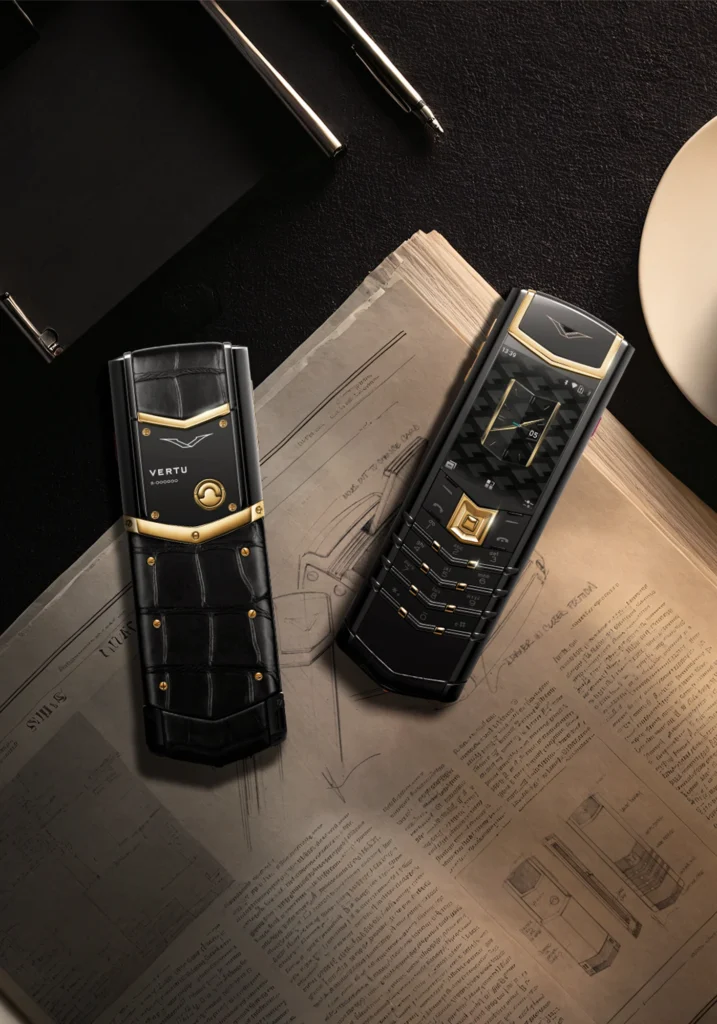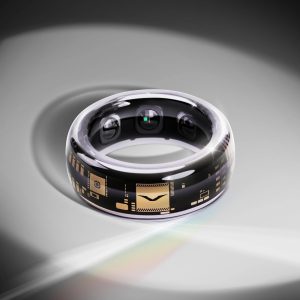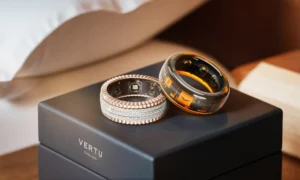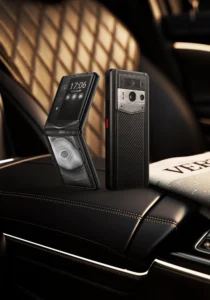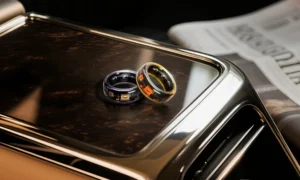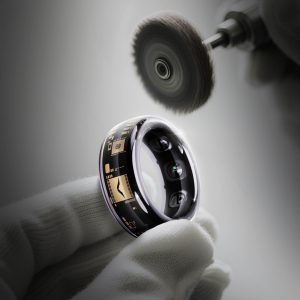Key Takeaways
- Military-grade protection doesn't just mean durability—it combines rugged hardware with advanced security features that government and defense agencies demand
- MIL-STD-810H certification is the gold standard for extreme environment smartphones, testing devices against drops, temperature extremes, and moisture
- Phones designed for extreme conditions offer comparable processing power to standard flagships while adding specialized durability layers
- Top contenders like CAT S62 Pro, Ulefone Power Armor 16, and JCB Toughphone combine tactical durability with practical everyday functionality
Understanding Military-Grade Smartphones: Beyond “Tough”
When we talk about the toughest smartphone in the world, we're not just discussing a phone that can survive a drop. Military-grade smartphones represent an entirely different category of device engineering. These phones undergo rigorous testing protocols that civilian smartphones never face, including extreme temperature cycling from -60°C to 70°C, immersion in saltwater, and impact testing from multiple angles.
What smartphone does the military use? Organizations like the U.S. Department of Defense, special forces units, and tactical teams require devices that meet MIL-STD-810H specifications—a testing standard that has become the industry benchmark for rugged durability. This military requirement has directly influenced the consumer market, creating a new segment of devices that prioritize survival over style.
The key difference between marketing “durability” and actual military-grade protection lies in standardized testing. A phone claiming to be waterproof and a MIL-STD-810H certified device have undergone completely different evaluation processes. Military phones must prove they can function in desert heat, arctic cold, high-altitude environments, and underwater conditions—simultaneously.
The Science Behind Military Smartphone Construction
Building the toughest smartphone requires a multi-layered approach to materials engineering. Unlike standard phones with aluminum frames and Gorilla Glass, military-grade devices employ reinforced polymers, aerospace-grade materials, and specialized coating systems.
Armor plating construction typically involves a combination of:
- Rubberized elastomer frames that absorb impact energy instead of transferring it to internal components
- Corning Gorilla Glass Victus 2 or equivalent strengthened with specialized anti-reflective coatings for extreme clarity in harsh conditions
- Sealed ports and gaskets using FDA-approved silicone that maintains water resistance for years of use
- Internal shock absorption featuring custom brackets and damping materials that protect the circuit board from vibration damage
Temperature resilience is achieved through carefully selected components rated for extended operating ranges. The battery, processor, and display are all specified to function in conditions that would permanently damage consumer-grade electronics. Additionally, military phones often feature redundant power systems with larger batteries (10,000mAh+) to ensure operation during extended missions.
The coating systems on these devices represent years of aerospace research. Advanced nanotechnology coatings provide grip in wet conditions, resistance to corrosive chemicals, and protection against UV degradation. What smartphone does the military use? Phones that maintain full functionality after exposure to sand, salt spray, and petrochemical solvents—not just water.
MIL-STD-810H Certification Explained
To understand what makes the world's toughest smartphone truly tough, you need to understand the MIL-STD-810H certification process. This U.S. Department of Defense standard tests devices across 28 different environmental conditions, though manufacturers typically focus on the most relevant protocols for their target market.
Key testing areas include:
Drop Testing (Method 514.8): Devices are dropped onto hardwood floors from heights of 4-6 feet onto all six sides plus corners. A single failure results in certification denial.
Thermal Extremes (Method 501.7): Phones cycle between -60°C and 70°C multiple times while powered on, ensuring battery, display, and processor performance remains consistent.
Vibration Testing (Method 514.7): Devices experience continuous vibration across multiple frequency ranges for hours, simulating vehicle transport and machinery operation.
Humidity and Salt Spray (Method 507.1 & 509.6): Phones endure salt fog environments that simulate years of coastal exposure in just 500 hours.
Immersion Testing (Method 512.6): Full underwater operation to specified depths for extended periods. Most military phones support 6-10 meter depths for 30+ minutes.
Not all rugged phones hold MIL-STD-810H certification. Many manufacturers test individual components against the standard without full device certification. This distinction matters significantly—a “MIL-STD tested” claim is fundamentally different from “MIL-STD certified,” the latter being far more rigorous and verifiable.
The Toughest Smartphones Compared: Specifications and Real-World Performance
CAT S62 Pro: Enterprise-Grade Durability
The CAT S62 Pro represents the convergence of industrial-grade engineering and practical smartphone features. Built by Caterpillar (the heavy equipment manufacturer) and Bulktransit Technologies, this phone embodies the “tough by design” philosophy.
Distinctive features:
- Thermal imaging camera with 320×256 resolution, enabling users to detect heat signatures in complete darkness—practical for search and rescue or equipment diagnostics
- MIL-STD-810H and IP68/IP69K certification with real-world durability proven by construction workers, utility crews, and emergency responders
- 9-meter underwater rating with full touchscreen functionality while submerged—critical for marine environments and flood response
- Corning Gorilla Glass 5 with dual-layer protection and oleophobic coating
- Battery capacity reaches 4,700mAh, delivering 14+ hours of continuous operation in harsh field conditions
The CAT S62 Pro appeals specifically to professionals who need specialized tools integrated into their phone rather than strapping multiple devices together.
Ulefone Power Armor 16: Maximum Battery Performance
The Ulefone Power Armor 16 champions extreme endurance, featuring the largest battery capacity in a rugged phone at 20,100mAh. This Chinese manufacturer focuses on delivering military-grade durability at consumer-friendly pricing.
Key specifications:
- MIL-STD-810H military certification with IP68/IP69K waterproofing
- 14-inch charging time from dead battery to full using the 67W fast charger—industry-leading for its capacity
- Drop protection from 6.5 feet onto concrete with military-grade elastomer frame
- Wireless charging integrated despite the thick 11.5mm profile
- Operating temperature range of -20°C to 60°C with verified performance in both conditions
- Thermal dissipation system prevents throttling during intensive gaming or video recording
Ulefone's approach prioritizes functionality and affordability over brand prestige, making this model attractive to budget-conscious professionals and outdoor enthusiasts.
JCB Toughphone: Specialized Construction Equipment Integration
The JCB Toughphone, developed by JCB (the construction equipment giant) and Bullitt Group, represents vertical integration of rugged technology. This device is engineered specifically for construction site environments where standard phones fail.
Specialized capabilities:
- MIL-STD-810H certified with testing under load-bearing conditions specific to construction
- 6-meter underwater rating with sealed charging port that requires a proprietary connector, preventing accidental water damage
- Thermal stabilization technology maintaining processor performance in 50°C+ environments
- Enhanced GPS accuracy for heavy machinery guidance and site navigation
- Single-handed operation mode with enlarged touch targets, practical when wearing work gloves
- Battery: 6,300mAh with 45W fast charging designed for quick overnight turnarounds
JCB's integration means the phone's software is optimized for construction management apps, site documentation, and equipment communication protocols used in professional building.
Comparative Specifications Table
| Feature | CAT S62 Pro | Ulefone Power Armor 16 | JCB Toughphone |
|---|---|---|---|
| Military Certification | MIL-STD-810H ✓ | MIL-STD-810H ✓ | MIL-STD-810H ✓ |
| Waterproof Rating | IP68/IP69K (9m) | IP68/IP69K (15m) | IP68 (6m) |
| Battery Capacity | 4,700mAh | 20,100mAh | 6,300mAh |
| Processor | Qualcomm Snapdragon 778G+ | MediaTek Helio G99 | Qualcomm Snapdragon 680 |
| Display Technology | 5.7″ Gorilla Glass 5 | 6.9″ IPS LCD | 5.5″ Gorilla Glass 3 |
| Specialized Hardware | Thermal Camera | Fast Charging Priority | Construction Integration |
| Price Range | $1,100-1,300 | $400-550 | $800-950 |
| Typical User | Emergency Responder | Budget Outdoor Enthusiast | Construction Professional |
| Drop Testing | 6 feet | 6.5 feet | 5 feet (under load) |
| Temperature Range | -30°C to 60°C | -20°C to 60°C | -20°C to 50°C |
Hardware vs. Software: Complete Military-Grade Protection
The toughest smartphone in the world combines military-grade hardware with enterprise-level security. While construction durability captures attention, the security architecture equally defines military-grade phones.
Hardware-level security includes:
- Secure enclave processors dedicated exclusively to encryption and biometric authentication
- Physical tamper detection that wipes sensitive data if the device's case is forcibly opened
- Faraday cage components protecting sensitive circuits from electromagnetic interference
- Certified military-grade encryption processors verified by NIST and NSA standards
Software integration with hardware protection ensures:
- Full disk encryption with keys stored in secure hardware rather than software
- Secure boot verification preventing unauthorized OS modifications
- Knox-equivalent systems (on Android) or equivalent iOS security providing granular control over app permissions
- Air-gap communication protocols enabling secure messaging without relying on standard cellular networks
What smartphone does the military use? Devices where hardware and software work together as an integrated security system, not as separate components. The rugged exterior is only half the story; the internal architecture is equally specialized.
Real-World Durability Scenarios: Where These Phones Excel
Military-grade smartphones prove their value in specific operational contexts where standard devices fail completely.
Extreme temperature environments: Construction crews working in Arctic regions or desert oil fields experience temperature swings of 50°C+ within single workdays. Military phones maintain full functionality throughout, while consumer devices experience throttling, battery shutdown, or display malfunction.
High-moisture environments: Fishing vessels, water treatment facilities, and marine construction projects create persistent humidity and salt spray conditions. Military-certified phones endure years in these environments; standard phones typically fail within months.
Drop and impact resistance: Industrial workers in warehouses, manufacturing plants, and construction sites drop phones constantly. Military-grade devices survive 6+ foot drops onto concrete; consumer phones suffer screen damage and internal component failure from half that height.
Chemical exposure: Construction sites, manufacturing plants, and automotive facilities expose phones to gasoline, diesel, hydraulic fluid, and solvents. Military phones feature coatings that resist these chemicals; standard phones corrode or malfunction on contact.
Extended field operations: Emergency response teams, military units, and remote site technicians require phones that operate for 24+ hours under continuous use. 10,000mAh+ batteries and specialized power management enable this; consumer flagships deliver 8-12 hours maximum.
Choosing Your Toughest Smartphone: Key Decision Factors
For Emergency Response Professionals
Select devices prioritizing real-time communication reliability and specialized equipment integration. The CAT S62 Pro's thermal imaging directly supports rescue operations, fire suppression, and hazmat response. Choose phones with MIL-STD-810H certification from manufacturers with proven track records in emergency services—not just marketing claims.
For Construction and Outdoor Workers
Prioritize battery capacity and charging speed for sites without regular charging access. The Ulefone Power Armor 16's 20,100mAh battery and 67W charging address all-day and multi-day operations. Manufacturing certifications matter less than real-world field testing by actual construction crews.
For Military and Defense Applications
Military units require complete security integration where hardware encryption, secure communication protocols, and physical hardening work as unified systems. Thermal imaging, night vision compatibility, and ruggedized interfaces supporting gloved operation become essential. Defense procurement follows specific authorization lists; units rarely select phones independently.
For Budget-Conscious Adventurers
Standard rugged phones lacking MIL-STD certification still deliver practical durability for hiking, camping, and recreational outdoor activities. These devices handle drops, moisture, and temperature variations adequate for civilian use at half the military-phone price point.
FAQ: Common Questions About Military-Grade Smartphones
Q: Do military smartphones actually use the same processors as consumer flagships?
A: Military phones typically use processors 1-2 generations behind current flagships, prioritizing stability and longevity over raw performance. The Snapdragon 778G+ in the CAT S62 Pro delivers ample performance while maintaining proven reliability. Thermal management becomes more critical in rugged phones than peak speed.
Q: Can I use a military phone for everyday tasks like social media and streaming?
A: Yes—military phones run standard Android or iOS and support all consumer applications. However, the thicker profile (10-12mm), heavier weight (250-300g), and larger bezels make them less comfortable than consumer flagships for extended handheld use. They're purpose-built for durability, not ergonomics.
Q: What's the actual difference between IP68 and MIL-STD-810H waterproofing?
A: IP68 certification guarantees water resistance to a specified depth for 30 minutes. MIL-STD-810H testing includes saltwater immersion, thermal cycling while wet, and continuous operation in humid environments—far more rigorous. A MIL-STD certified phone surviving beach use for years; an IP68 consumer phone may corrode within months.
Q: Are military phones really worth 3x the price of consumer flagships?
A: For professionals in harsh environments, the durability ROI is clear—one replacement phone costs $1,000-1,500, while rugged phone depreciation over 3-5 years equals the difference. For casual users, standard phones with cases provide adequate protection at lower cost.
Scenario-Based Recommendations: Matching Phones to Real Situations
Scenario 1: The Search and Rescue Coordinator
Your role requires coordinating multi-team operations in remote mountains during unpredictable weather. You need clear camera performance for team documentation, GPS reliability when cellular fails, and batteries lasting full operational days (12-16 hours).
Recommended phone: CAT S62 Pro
Why it works: The thermal camera directly supports missing person searches. MIL-STD-810H certification handles temperature swings from dawn mountain freeze to midday sun exposure. Dual GPS receivers provide redundancy when commercial satellites face obstruction.
Scenario 2: The Offshore Oil Rig Technician
Daily exposure to saltwater spray, hydraulic fluid, diesel fuel, and extreme equipment impacts characterizes your work environment. Your phone must survive constant pocket drops, salt corrosion, and occasional crude immersion. Battery needs to outlast 12-hour shifts without charging access.
Recommended phone: Ulefone Power Armor 16
Why it works: The 20,100mAh battery delivers 16+ hours of operation through your entire shift. Corrosion-resistant coatings specifically resist petrochemical exposure. Higher drop rating (6.5 feet) accounts for repeated accidental falls on metal decking. Lower cost means replacement costs don't impact budget significantly.
Scenario 3: The Emergency Responder
Your fire department, police unit, or EMT service needs reliable communication during structural collapses, vehicle accidents, and hazardous material incidents. The phone must withstand debris impacts, maintain water functionality during flood responses, and provide clear voice communication in high-noise environments.
Recommended phone: CAT S62 Pro or JCB Toughphone
Why it works: Both phones offer thermal imaging for search operations and enhanced durability for impact resistance during structural work. Enterprise integration means IT departments can provision fleet devices with streamlined deployment processes.
Recommended User Groups
| User Type | Primary Need | Recommended Phone | Key Benefit |
|---|---|---|---|
| Emergency Responder | Specialized thermal imaging | CAT S62 Pro | Integrated rescue tools |
| Construction Professional | Extended battery life | Ulefone Power Armor 16 | All-day operation |
| Military/Defense Personnel | Complete security integration | CAT S62 Pro or JCB | Military-grade encryption |
| Outdoor Adventure Enthusiast | Drop resistance + waterproofing | Ulefone Power Armor 16 | Value pricing |
| Marine/Coastal Worker | Saltwater corrosion resistance | Ulefone Power Armor 16 | Enhanced durability coatings |
| Remote Site Technician | Battery endurance + durability | CAT S62 Pro | Reliability in isolation |

